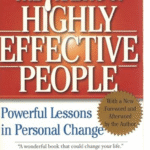The 90/10 Rule: How to Stay Calm When Life Gets Messy

Seldom does life go as planned. An important meeting begins without you after you get stuck in traffic, wake up late, and spill coffee on your shirt. The majority of people would describe it as a “bad day,” but The 90/10 Rule: How to Stay Calm Your response is far more important than the actual events when life gets messy.
The 90/10 Rule is a straightforward but effective mental adjustment that can change the way you handle pressure, difficulties, and unforeseen circumstances. We’ll go over how it functions, why it works so well, and useful applications you can use on a daily basis to maintain composure in the face of chaos in this guide.

The 90/10 Rule: What is it?
Stephen Covey, a leadership expert, popularized the 90/10 Rule, which states:
What happens to you makes up 10% of life. 90% depends on how you respond to it.
This implies that how you react to the situation determines how much stress, annoyance, or tranquility you experience.
- Small issues have the potential to grow into major ones if you respond poorly.
- You maintain control and keep situations from ruining your day if you react calmly.
Why The 90/10 Rule Is So Effective
The rationale The basic idea behind The 90/10 Rule: How to Stay Calm When Life Gets Messy is that while you can’t control everything, you can control yourself.
- It halts the blame game by directing attention toward solutions rather than accusation.
- It lessens stress: Acceptance eases emotional strain.
- It maintains healthy relationships because composed reactions avoid needless confrontations.
- It increases resilience by teaching your brain to deal with difficulties more effectively.
Common Situations Where the 90/10 Rule Can Save Your Day
- Morning mishaps include missing breakfast or waking up late.
- Stress at work: Tough deadlines or last-minute changes.
- Family disputes: Contentious discussions that have the potential to get out of hand.
- Unexpected costs include medical bills or auto repairs.
- Traffic bottlenecks or delayed flights are examples of travel issues.
In each instance, your response to the event greatly influences how stressed you are.
How to Use the 90/10 Rule in Everyday Situations
1.Pause Before Reacting
Your initial reaction when something goes wrong may be an emotional one. However, before you answer:
- To allow your mind to clear, take a deep breath.
- If your emotions are running high, count to ten.
- Remember: “This is the 10%.” The 90% is how I respond.
2.Focus on What You Can Control
Although you cannot alter the past, you can have an impact on the future. Consider this:
- Now what can I do?
- How can I keep this from getting worse?
- What good can I make of this?
3.Reframe the Situation
Changing your point of view alters how you respond. Rather than viewing something as a catastrophe, search for:
- Teachings : What does this teach me?
- Possibilities: Could this lead to new opportunities?
- Appreciation : What is still going well today?
4.Practice Mindfulness
You can avoid overanalyzing what went wrong by practicing mindfulness. Try:

- brief meditations during tense situations.
- While at your desk, practice mindful breathing.
- Grounding techniques include taking note of your surroundings.
5.Be Ready for Anything Unexpected
Even though you can’t foresee everything, you can get ready for typical stressors:
- Have a contingency plan in case of emergencies.
- Give yourself more time to travel.
- Have a small emergency fund set aside for unforeseen costs.
The Science Behind the 90/10 Rule
Studies in psychology and neuroscience back up the effectiveness of the 90/10 approach.
- Emotional control: By pausing before acting, your brain’s prefrontal cortex can suppress emotional urges.
- Stress reduction: Calm reactions keep you healthier by lowering cortisol levels.
- Positive reinforcement: It gets easier in the future the more composedly you respond.
Benefits of Living by the 90/10 Rule
You’ll observe changes in several aspects of your life once you develop this habit:

- Reduced things that will “ruin” your day will improve your mood.
- Better relationships: Your composure is well received by others.
- Reduced time spent on emotional responses translates into increased productivity.
- Improved ability to solve problems Better decisions are the result of clear thinking.
Real-World Example: Improving a Poor Morning
Consider this:
Before a big presentation, you get coffee on your shirt. There are two options available to you:
React negatively by yelling, whining, and remaining agitated all day. Your interactions and performance are impacted by this stress.
Use the 90/10 Rule: Laugh it off, get dressed fast, and concentrate on giving a strong presentation.
The 10% coffee spill is the same in both cases. However, the result is entirely altered by your response (the 90%).
Ways to Boost Your 90/10 Attitude
The 90/10 Rule: How to Remain Calm Try these Techniques to make it second nature when life gets messy:
- Keep a journal every day to record your thoughts and reactions to events.
- Minimize negative input by staying away from toxic social media and news sources.
- Be in the company of calm people because moods can spread.
- Remind yourself every day of your blessings and cultivate an attitude of gratitude.
How the 90/10 Rule Aids in Overcoming Major Obstacles in Life
This way of thinking extends beyond small annoyances. It can also assist with significant life disruptions:
- Job loss: Don’t panic; instead, concentrate on your abilities and opportunities.
- Breakups in relationships: Avoid retaliation and instead maintain clarity and dignity.
- Health problems: Put your energy into getting better and adopting healthy routines.
The important thing is to keep in mind that your response determines your reality more so than the actual difficulty.
Common Mistakes When Using the 90/10 Rule
People occasionally abuse this idea, even when they mean well:
- Ignoring feelings: Managing your emotions in a healthy way is more important than repressing them.
- Self-blame: The 90/10 Rule is about control, not guilt.
- Overanalyzing reactions: Sometimes just moving on is the best course of action.
Hands-on Activities to Learn the 90/10 Rule
Exercise 1: Reflection on Reaction
- List three stressful situations and your reactions at the end of the day.
- Is there anything I could have done differently?
Exercise 2 – The Calm Challenge
- For a week, intentionally wait before reacting to any annoyance.
- Keep track of how your stress and mood have changed.
Exercise 3 – Role-Play Practice
- Play out frustrating situations with a friend.
- Practice being calm and solution-focused when you respond.
Inspiring Quotes to Keep You Grounded
A few words can occasionally serve as a reminder of the greater picture:
- “Life is 90% about how we respond to things and 10% about what happens to us.” Charles R. Swindoll
- “You can learn to surf, but you can’t control the waves.” – Jon Kabat-Zinn
- There is a gap between stimulus and response. We have the ability to select our response in that area. Viktor Frankl
Conclusions Regarding the 90/10 Rule
How to Maintain Calm When You Adhere to the 90/10 Rule You regain control over your feelings, your tranquility, and your everyday joy when you read When Life Gets Messy. Although life will still be uncertain, you will become more resilient to it.

You’ll begin to view difficulties as chances to exercise self-control, patience, and perspective rather than allowing minor issues to grow into major ones. And that kind of thinking can change your life completely over time.
Keep in mind that although you may not have control over what occurs, you do have control over how you react.
Next Step: Identify one circumstance in which you typically have a negative reaction today. Take a moment, implement the 90/10 Rule, and observe the impact it has.




